Broccoli, planting and growing in open ground
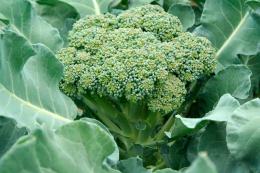
Broccoli - a popular vegetable plant from the Brassica family, a subspecies of the Cabbage species. Industrial cultivation of broccoli is currently popular in Europe, as well as in China, India and the USA. Although broccoli differs in appearance from cabbage, its cultivation is not fundamentally different. Let's try to find out the reasons for the growing widespread popularity of this cabbage and how accessible it is for amateur vegetable growers to grow broccoli in open ground.
Content:
- History of the subspecies of garden broccoli, description of the plant
- How to plant broccoli in open ground
- How to care for broccoli after planting in the ground and before harvesting
History of the subspecies of garden broccoli, description of the plant
The main difference between broccoli and the usual white cabbage is that flowers and seeds form on the modified stem in the first year. Closed buds are collected in a loose head. On this basis, it is not only similar to cauliflower, but also from a genetic point of view, it is its genetic ancestor. Both broccoli and cauliflower cabbage The edible parts are the buds collected in inflorescences.
From about the 5th century BC until the beginning of the 16th century, broccoli was known only within Italy. With the development of navigation and the development of new lands, Italian broccoli began to gain popularity in Europe, from where it came to the United States.Now California can be considered the cabbage state; 95% of all American broccoli is grown in this state.
This popularity is explained by its high taste and incredibly useful chemical composition. The content of folic acid, vitamins K and C in a small head of broccoli is several times higher than a person’s daily need for them.

It is important to know that there are varieties of broccoli that are the absolute leader among all cabbage plants in the content of glucoraphanin, an important anti-cancer chemical compound. Broccoli grows best in a mild, warm, and humid climate. In regions with warm winters, broccoli can be grown in open ground almost throughout the year. We will try to find out how to plant and grow broccoli in the weather and climate conditions of most regions with temperate climates and cold winters.
How to plant broccoli in open ground
Like most subspecies of cabbage, broccoli is grown in open ground in two ways:
- seedlings
- sowing seeds in open ground
Sowing broccoli seedlings is as easy as sowing white cabbage. It is optimal to sow seedlings in late March - early April. Any soil to which sand and wood ash will be added will do. After the emergence of seedlings, approximately on the 35th day, at the stage of appearance of the fifth true leaf, broccoli is ready to be transplanted into open ground.
Thus, if the seedlings were sown on March 30, then by May 15, when the soil and air temperatures reach values suitable for growing broccoli in open ground, they are planted on the plot.The seedlings do not require additional shelter, since this type of cabbage can safely withstand short-term drops in temperature.
Taking this into account, in the first ten days of May it is possible to successfully sow broccoli seeds in open ground and such plants will practically catch up with those grown through seedlings. Fiddling with seedling boxes, soil, providing seedlings with lighting and watering is not always advisable in most regions. The best place for growing broccoli in open ground will be the beds where the following grew in the previous season:
- peas
- beans
- potato
- tomatoes
- pepper
The most suitable soil is slightly alkaline or neutral soil, into which humus and a potassium-phosphorus mixture have been added in the fall. The broccoli bed should be well lit by the sun and always have moist soil. If you accumulate a decent amount of eggshells, then after crushing they will be an excellent fertilizer for the cabbage bed.

The distance between individual broccoli plants should depend on the size of the heads of a particular variety; between plants in a row it is from 30 to 40 cm, and between rows - 0.5 m. The depth of the hole is 15 cm, seedlings are embedded in the soil so that the hole was not completely covered with soil; soil is added as the broccoli grows. When planting, the hole must be shed generously with water. Continued success in obtaining a broccoli harvest depends on caring for broccoli in open ground.
How to care for broccoli after planting in the ground and before harvesting
Priority action after landings - protects broccoli from cabbage flea beetles. It is most effective to cover the plantings with non-woven material in the first days.In years when the flea beetle is very numerous, it will have to be dealt with using chemicals, for example, the drug "Iskra".
If a vegetable grower does not want to get involved with chemicals, then the best way to cope with the problem is to regularly sprinkle broccoli with wood ash. Broccoli can only be grown successfully under good watering conditions. The top layer of soil should be constantly moist by at least 10 - 15 cm. On the hottest and driest days, you will have to water the cabbage twice a day. This should be done early in the morning and in the evening, after the sun sets below the horizon. Under normal weather conditions, one watering every 2 to 3 days is sufficient.
Even if the bed was filled with fertilizers before planting cabbage in open ground, it is advisable to dilute mullein and feed the broccoli several times before harvesting, every 15 days.
Before cutting the heads, you need to apply complex mineral fertilizer. Then, after cutting off the main head of broccoli in open ground, the growth of side shoots will be stimulated.
Thus, it will be possible to re-harvest. It is important to remember that as soon as the green buds open and the broccoli turns yellow with small flowers, it is no longer suitable for food. Therefore, do not wait for cabbage to bloom, harvest it in a timely manner and eat healthy and tasty broccoli, grown with his own hand.
Video about growing broccoli:


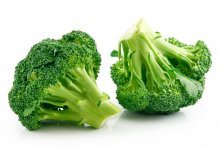
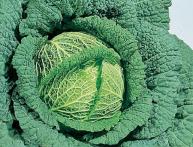
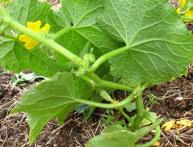


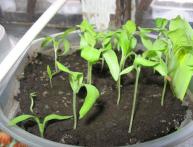
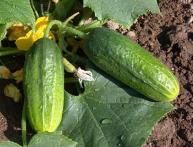

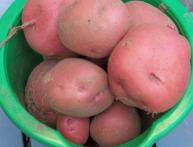
Comments
We have never grown broccoli before, but after reading about the incredible benefits of this vegetable, we will try to plant it this year, although watering it twice a day in the summer will be difficult.